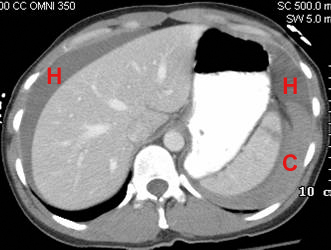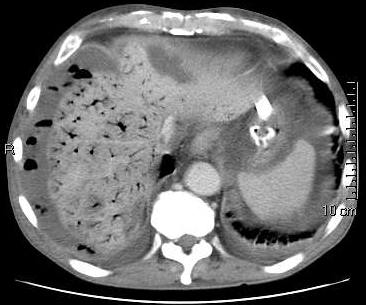GI Radiology > Peritoneum > Quiz
Peritoneum Section Quiz
![]()
|
1. In the supine position, the most dependent portion of the peritoneum in the upper abdomen where ascites will accumulate is:
|
|
2. This CT from a trauma patient demonstrates:
|
3. The sentinel clot sign:
|
|
4. The most common cause of pneumoretroperitoneum is perforation of the first portion of the duodenum.
|
|
5. All of the following may be signs of free air in the abdomen EXCEPT:
|
|
6. The following disease process may have been a result of:
|
Your score is out of 6.
Do you want to see the answers?


